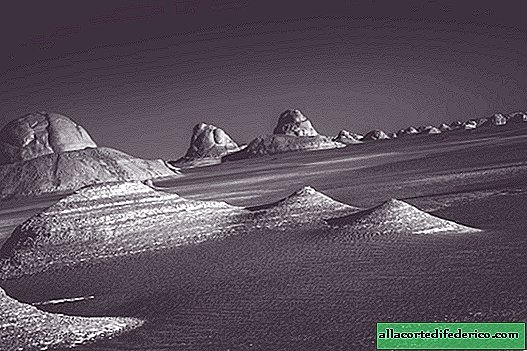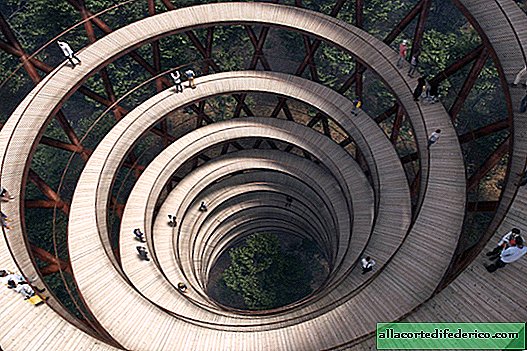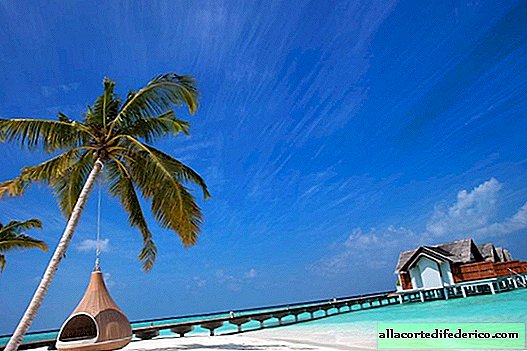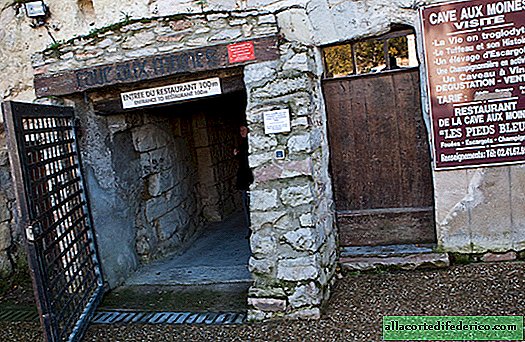Tiwanaku in the Andes - an ancient seaport at an altitude of 4,000 meters
Tiwanaku, or Tiaguanako - the ruins of a mysterious ancient city, which is located in the Andes at an altitude of about 4000 meters. This place is located 19 kilometers from the most beautiful lake in South America - Titicaca. Scientists believe that the secrets of this ancient Indian city are connected with it. However, is it Indian? But first things first. Let's start from the lake.
 In the photo: Lake Titicaca
In the photo: Lake TiticacaTiticaca is a very beautiful freshwater lake with an area of 8,370 square meters. km (for comparison, the area of Lake Onega is 9,700 sq. km.). It is located on the Altiplano plateau on the border of Peru and Bolivia at an altitude of 3800 meters and is even navigable. Geologists have discovered very interesting facts from the life of this lake. It turns out that in the past this territory was much lower, and the lake was a sea bay. This is evidenced by traces of the surf on the rocky shores, as well as the unusual fauna of the reservoir. Alpine freshwater lake, located 250 kilometers from the Pacific Ocean and not connected with it through rivers, is inhabited mainly by marine species of fish and crustaceans. Researchers suggest that in the past there was a terrible geological disaster that caused a sharp rise in this land area. In Inca mythology, there are also legends about the terrible flood that hit the world.
 In the photo: panorama of the Kalasasaya Temple in Tiwanaku
In the photo: panorama of the Kalasasaya Temple in TiwanakuThis is evidenced by the remains of the city of Tiwanaku, which, according to researchers, was previously a large seaport and was located on the shores of Lake Titicaca. The terrible catastrophe has also been reported by the remains of people found along with household items, fragments of buildings and other objects that are not at all characteristic of traditional burials. And a number of city buildings resembles the sea promenade. This city was the center of the Andean civilization of the same name. What is left of it causes researchers more questions than answers. The time of construction of the ancient structure is not precisely defined, and there are buildings of different ages inside the city. In all likelihood, the city was built, rebuilt and rebuilt for more than one millennium. Some researchers believe that the most ancient parts of Tiwanaku were built in 200 BC, and the later structures date back to 600-1000 years of our era.
 In the photo: The Gate of the Sun
In the photo: The Gate of the SunMore ancient buildings are noticeably different from the latest structures. This, for example, the Gate of the Sun and the Kalasasaya Temple. They are stacked in gigantic slabs with perfectly even edges that fit each other with amazing accuracy. Many researchers doubt that all this was built by the civilization of the Indians. Most likely, these are the ancient remains of the city of a more advanced civilization unknown to science. And the Indians who came here simply used the preserved foundations and sections of buildings, eventually building them up.
The fact that Tiwanaku and Lake Titicaca are closely related is also indicated by the relatively recent find at the bottom of the lake. In 2000, an underwater temple was discovered here, to which stone steps lead, and its age dates from about 500 AD. Moreover, steps lead to a highland path on land. The temple has dimensions of 50 to 200 meters, and near it there is an agricultural terrace. The location of the temple at the bottom of the lake also raises a lot of questions and until it finds an intelligible explanation.
 In the photo: the wall of the Kalasasaya Temple, laid out in perfectly even blocks
In the photo: the wall of the Kalasasaya Temple, laid out in perfectly even blocksThe ruins of Tiwanaku are a UNESCO World Heritage Site. Research on Lake Titicaca and its associated ancient city continues. And there is no doubt that many more interesting things will be found here related to the ancient civilizations of our planet.

















